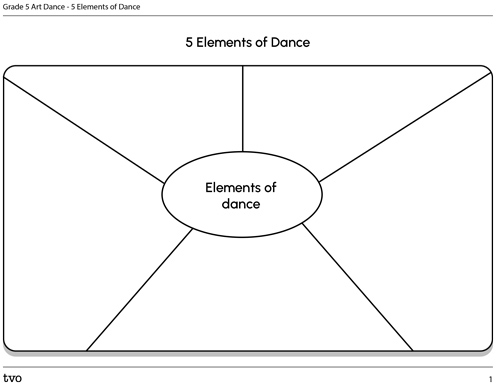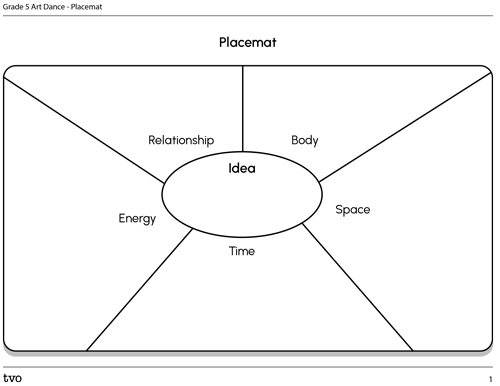Minds On
Today’s vocabulary
Important ideas in dance, which include the following:
- Body: The instrument of dance. The term body may also refer to the body’s position or shape (e.g., curved, straight, angular, twisted, symmetrical, asymmetrical); also, how the body is moving (e.g., using locomotor or non-locomotor movements).
- Energy: The force with which the body moves (e.g., light, strong, sustained, sudden).
- Relationship: The way in which two or more things are connected to or associated with one another (e.g., dancer to dancer, dancer to object, right arm to left arm).
- Space: The physical area in which the body moves; also, the area surrounding the body.
- Time: An element of dance involving rhythm, tempo, accent, and duration. Time can be based on measured beats, as in music, or on body rhythms, such as breath, emotions, and heartbeat.
A movement that involves travelling from one place to another across a space (e.g., walking, galloping, rolling, etc.).
The distance between a dancer’s movement to the floor, usually measured as high, medium, and low.
The part of the body that is supporting the rest of the body. When someone is kneeling, for example, the knees are the body base.
Let’s get started!
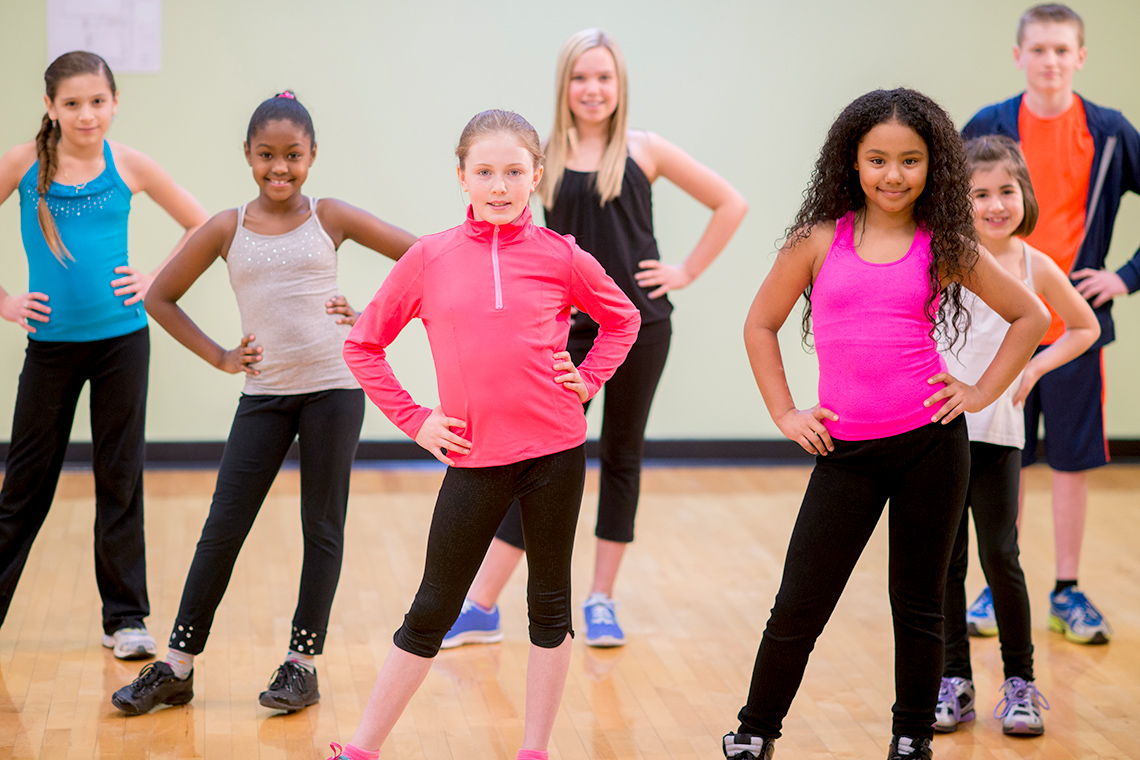
There are many ways to explore the elements of dance! There are various ways in which someone might choose to move. Each dancer develops their own movement vocabulary.
Let’s explore the elements…
Access the following Elements of Dance chart. This is an important chart, and we will be referring to it throughout the learning activity.
|
Body |
What is your body doing? Consider the following questions:
|
|---|---|
|
Space |
Where is your body moving? Consider the following questions:
|
|
Time |
When is the body moving? (in relation to time) Consider the following questions:
|
|
Energy |
How is the body moving? Consider the following questions:
|
|
Relationship |
Who or what is the body moving with? Consider the following questions:
|
Now, record your own ideas about each of the elements of dance. Record your ideas in the following fillable and printable 5 Elements of Dance graphic organizer. You can use the questions from the Elements of Dance anchor chart as prompts to guide your thinking.
You can also complete this activity using another method of your choice.
Action
Get ready, get set…
Did you know the elements of dance are the building blocks of dance? Different dance genres select and combine the elements of dance in various ways.
Let’s start by examining the following video of a solo dancer dancing in the street.
Identifying the elements of dance
Let’s respond to some questions about the dancing video. You can refer to the Elements of Dance chart to help you with these questions.
Press the ‘Elements of Dance’ button to access this chart.
|
Body |
What is your body doing? Consider the following questions:
|
|---|---|
|
Space |
Where is your body moving? Consider the following questions:
|
|
Time |
When is the body moving? (in relation to time) Consider the following questions:
|
|
Energy |
How is the body moving? Consider the following questions:
|
|
Relationship |
Who or what is the body moving with? Consider the following questions:
|
Answer the following questions. You can record your responses using a method of your choice.
What was an example of the element of body in this dance piece?
When you’re ready, press the ‘Answer’ button to reveal a possible answer.
The dancer uses locomotor movement and feet as a body base.
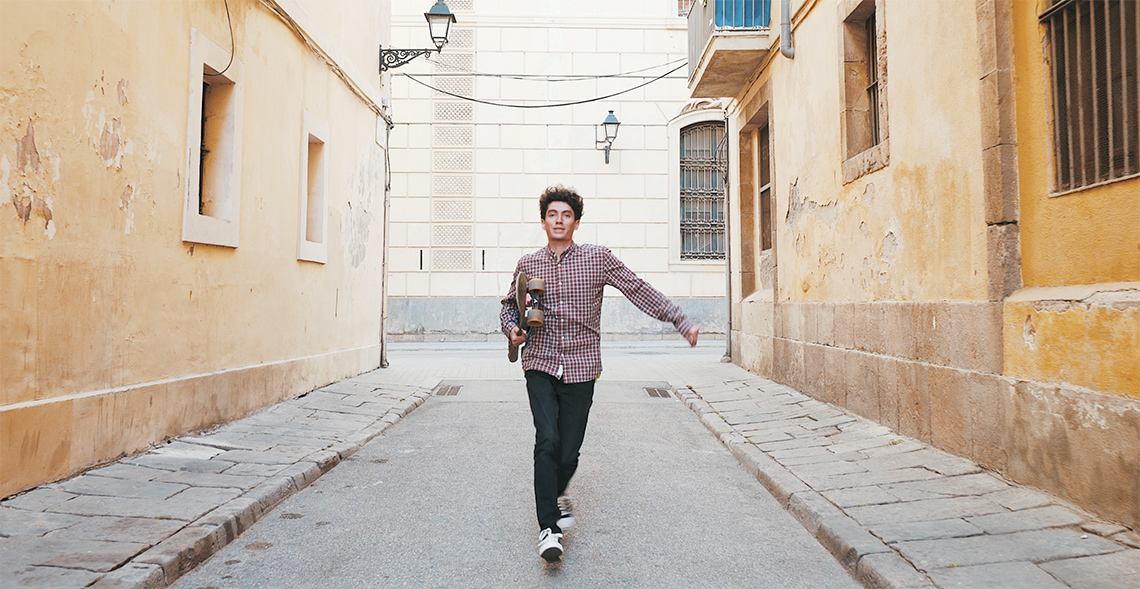
What was an example of the element of space in this dance piece?
When you’re ready, press the ‘Answer’ button to reveal a possible answer.
The dancer dances at a high level and travels forward.

What was an example of the element of time in this dance piece?
When you’re ready, press the ‘Answer’ button to reveal a possible answer.
The dancer uses quick movements.
For example, in this part of the video the dancer moves quickly and lightly, doing a spin and then travelling towards the camera.
What was an example of the element of energy in this dance piece?
When you’re ready, press the ‘Answer’ button to reveal a possible answer.
The dancer uses sudden, light movements.
For example, in this part of the video the dancer hops backwards on their left foot, tapping their right foot behind them.
What was an example of the element of relationship in this dance piece?
When you’re ready, press the ‘Answer’ button to reveal a possible answer.
The dancer is solo and occasionally makes eye contact with the audience. The dancer carries a prop (the skateboard) but does not use it.
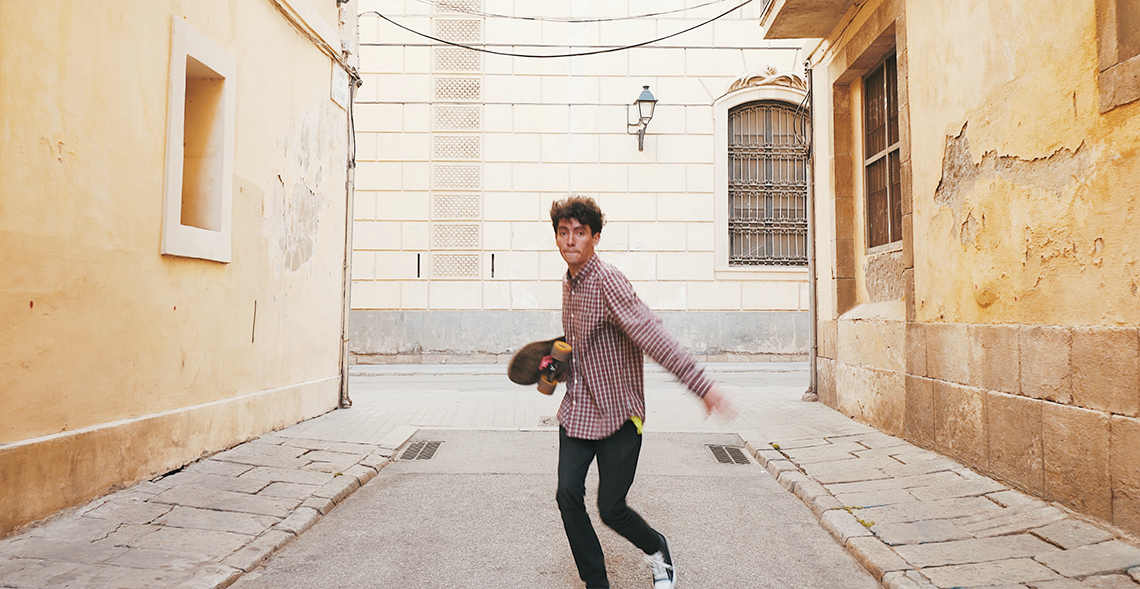
Pause and Reflect
Thinking about theme

The elements of dance work together to create meaning. Even if there is not a specific story in dance, the elements of dance can evoke a particular theme or mood. Consider the dance piece you just explored. What might the theme or the mood of this piece be?
Think about the following:
- What’s the mood of this dance piece?
When you’re ready, press the ‘Answer’ button to reveal a possible answer.
- How are the elements used to create that mood?
When you’re ready, press the ‘Answer’ button to reveal a possible answer.
The dancer uses light, quick movements. They make eye contact with the camera and travel at a high level towards the camera.
Go!
Communicating through dance
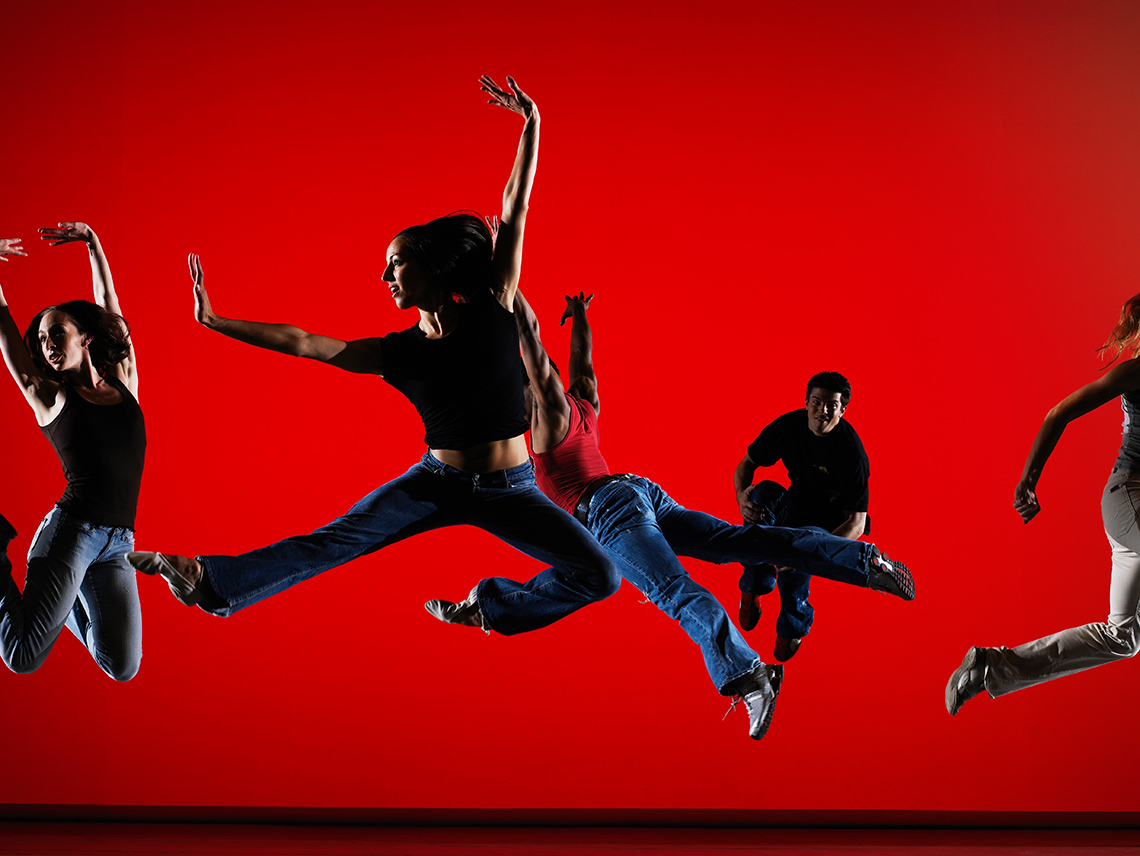
The elements of dance can be used and combined to communicate a message to the audience. Let’s explore the following example to determine how the elements of dance are used to communicate the message of the dance piece.
The following video tells the story of Ramayana through dance. The Ramayana is a famous Sanskrit story that depicts Prince Rama’s journey to rescue his wife, Sita, from the clutches of the villain Ravana. He is assisted by an army of monkeys on his journey. It is considered one of the most important literary works of Ancient India.
Here is the video for you to explore:
Use the following questions to reflect on the video. You can record your ideas in a method of your choice.
- What do you think is happening in this video clip?
- What do you think the relationship is between these characters?
- Which character is more powerful or important? What makes you think that? (Try and make connections to the elements of dance if you can!)
- How did the dancer(s) use the elements of dance to communicate this message?
Consolidation
Putting it all together
Creating movements
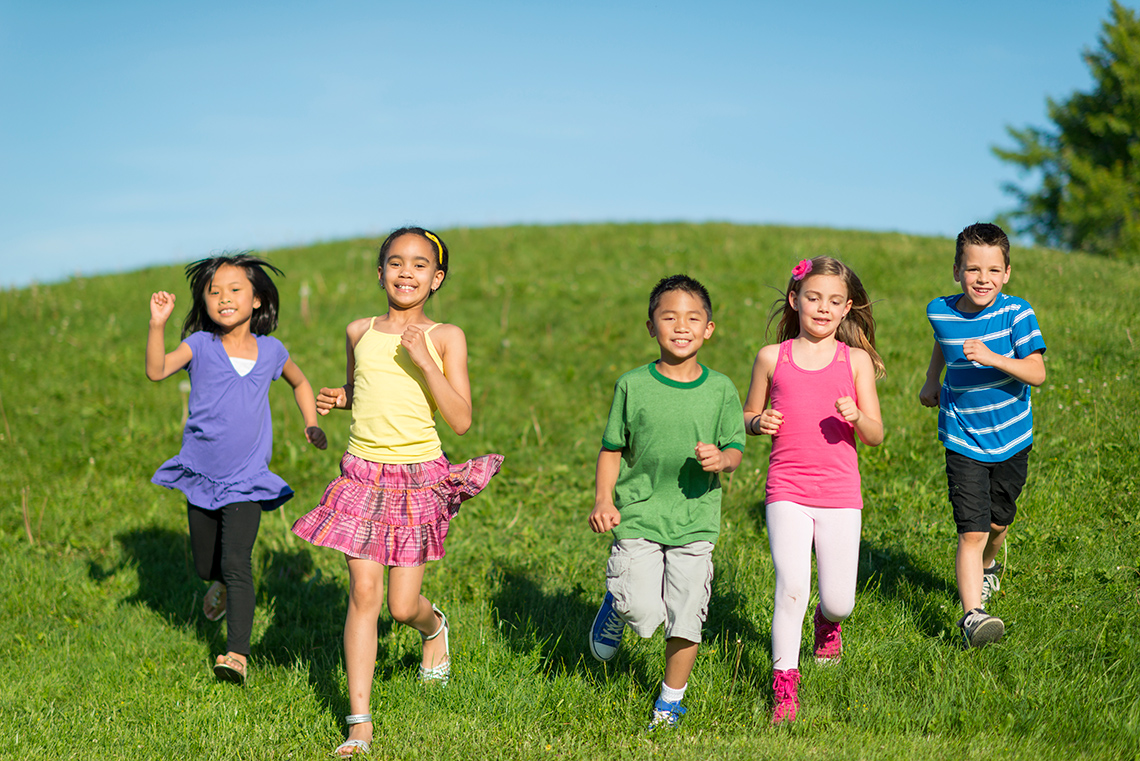
What elements of dance could be used to communicate the following ideas?
- excitement
- arriving somewhere
- a surprise encounter
- the anticipation of an event
Use movements, pictures, or record a detailed written or audio description to share your ideas.
You can also use the following fillable and printable Placemat organizer to record your ideas.
If possible, show or tell someone your movements!
If you are going to do these movements yourself, do a safety check before you begin.
Safety
Before you begin, consider these safety precautions:
Portfolio
Review your learning
Use the following questions to reflect on your learning.
- Is there one element of dance that is more important than the others?
- What elements of dance do you use the most?
- What information can be used to determine the message in a dance piece? How can this information be used to help determine the message in the dance piece?
- What is the difference between communicating a message in drama vs. in dance?
You can record your ideas using a method of your choice. Consider adding your work to your portfolio.
Reflection
As you read through these descriptions, which sentence best describes how you are feeling about your understanding of this learning activity? Press the button that is beside this sentence.
I feel…
Now, record your ideas using a voice recorder, speech-to-text, or writing tool.
